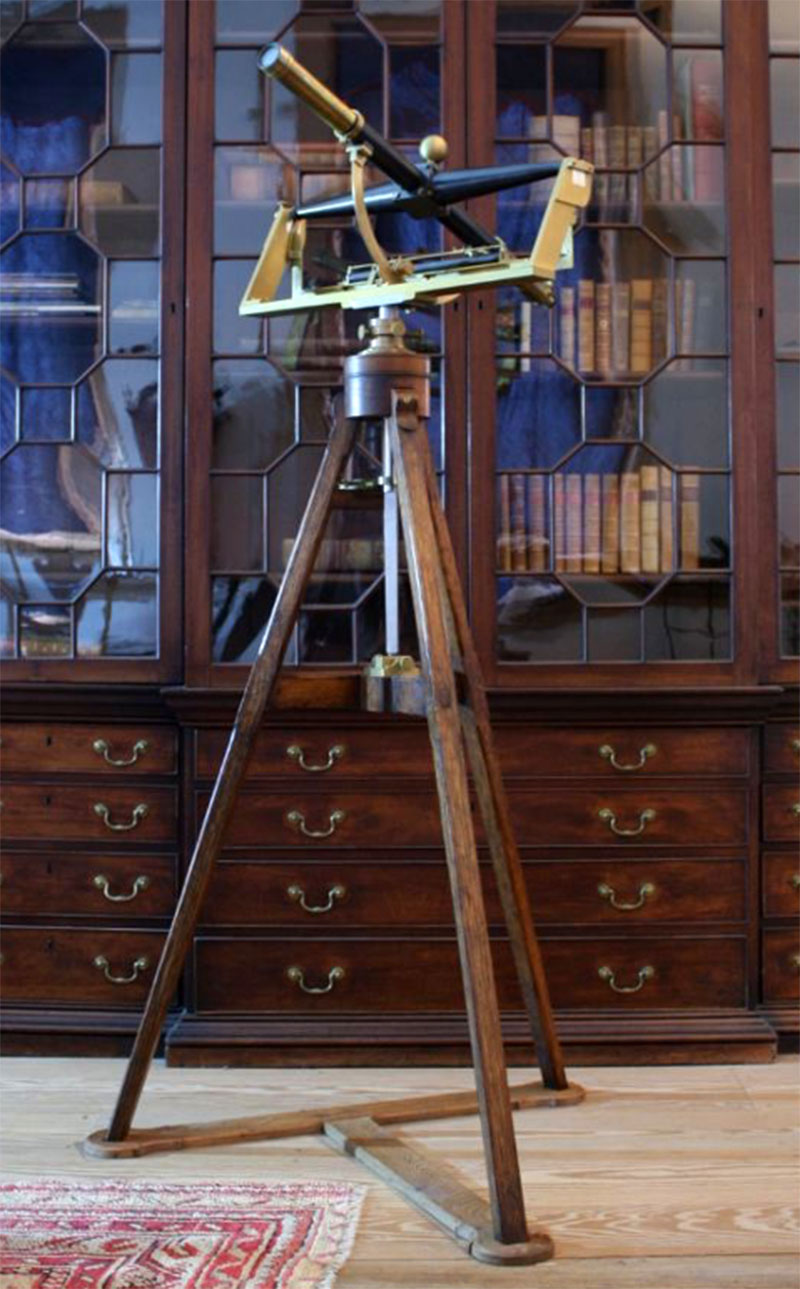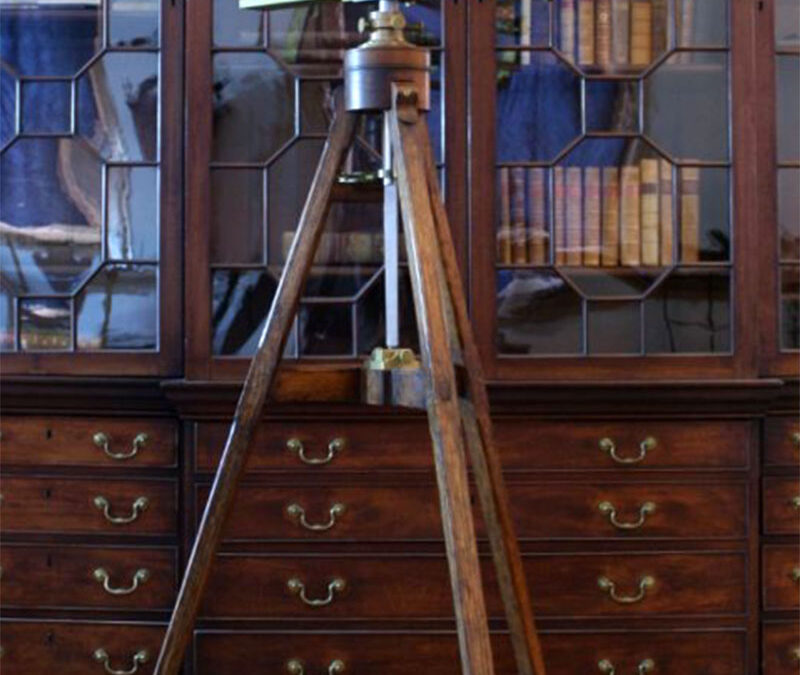Transit
Home > Folk Art, Instruments, and Tools > Transit

| Maker | John Bird, Scientific Instrument Maker |
| Date of Creation | c. 1760 |
| Location | London, England (Used in Pennsylvania) |
| Materials | Brass, Glass, Wood |
| Institution | City of Philadelphia |
| Credit Line | Independence National Historical Park |
| Accession Number | INDE-00001/Catalog Number INDE 11891/SN 28.001 |
| Photo Credit | National Park Service |
Pennsylvania Proprietor Thomas Penn commissioned this transit in 1760 to settle a longstanding boundary dispute between Pennsylvania and Maryland that began with a hundred years before with then proprietors, William Penn and Charles Calvert. Surveyors Charles Mason and Jeremiah Dixon, both of whom had studied astronomy at the Royal Observatory at Greenwich, laid out a 233-mile “West Line” of latitude that began in Philadelphia and terminated with the boundary of western Virginia (now West Virginia). While they settled the dispute between the two colonies when they completed the survey in 1767, they inadvertently created a distinct cultural boundary between the northern and southern United States, and thus, the dividing line between slavery and freedom. The Missouri Compromise of 1820 thrust the now “Mason-Dixon” line into popular culture when Congress first used the name to designate the physical boundary between free states and those still engaging in enslavement. Today, more than 150 years after the restoration of the Union following the Civil War, the Mason-Dixon line still resonates as a powerful symbol of the division between North and South, and the distinct cultural, religious and political values that exist on each side.

